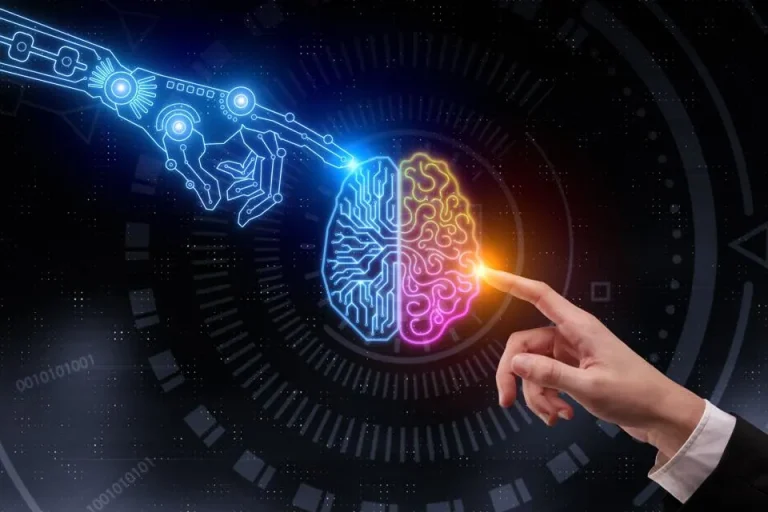Ad Copy Content Test: Humans vs. Generative AI in Head-to-Head Comparison
In the bustling corridors of Digital content creation, a quiet revolution is underway. The advent of Generative AI, spanning from the realm of AI text generator, story, and AI writing generators, has ushered in an era of unprecedented innovation and transformation. This article embarks on a deep dive into the evolutionary trajectory of AI generators, exploring their multifaceted applications, inherent challenges, and the intricate interplay between human creativity and machine intelligence.
Unraveling the Tapestry of Generative AI:
At the heart of Generative AI lies a tapestry woven with intricate algorithms, neural network architectures, and vast troves of data. These sophisticated systems possess the ability to decipher linguistic nuances, discern contextual cues, and craft text that mirrors the cadence and coherence of human-generated content. From recurrent neural networks (RNNs) to transformer models like GPT (Generative Pre-trained Transformer), the landscape of AI generators is characterized by a relentless pursuit of innovation and refinement.
Applications Across Industries:
The canvas upon which Generative AI paint their strokes spans a myriad of industries, each benefiting from the seamless integration of machine intelligence into content creation workflows. In the realm of marketing and advertising, AI generators serve as virtuoso artisans, sculpting persuasive ad copy, captivating product descriptions, and engaging social media posts with unparalleled finesse. Marketers wield these tools as instruments to orchestrate symphonies of consumer engagement and brand resonance, leveraging AI-generated content to resonate with target audiences on a profound emotional level.
In the realm of journalism, Generative AI don the mantle of information architects, parsing vast datasets, and distilling complex narratives into succinct news articles and data-driven reports. Through automated content curation, summarization, and even the synthesis of investigative pieces, journalists harness the power of AI generators to amplify their storytelling prowess and transcend the constraints of time and resource limitations.
The entertainment industry, too, finds itself enraptured by the spell of Generative AI, which serve as alchemists of imagination, conjuring immersive storylines, dynamic characters, and captivating dialogue. From interactive narratives in gaming to personalized content experiences in streaming platforms, AI story generators breathe life into digital realms, blurring the boundaries between reality and fiction and inviting audiences to embark on transformative journeys of exploration and discovery.
Challenges and Ethical Considerations:
Amidst the crescendo of innovation, the harmonious symphony of human creativity and machine intelligence is not without its dissonant notes. Ethical quandaries loom large on the horizon, casting shadows of doubt upon the ethical use and societal implications of AI-generated content. Concerns surrounding algorithmic bias, misinformation dissemination, and the erosion of human agency underscore the imperative for responsible AI development and conscientious oversight.
Moreover, the specter of job displacement and professional obsolescence looms large, as the advent of Generative AI raises pertinent questions about the future of employment in content-related industries. While these tools augment human capabilities and streamline repetitive tasks, they also engender apprehensions regarding the commodification of creativity, the erosion of professional autonomy, and the equitable distribution of economic opportunities.
Looking Ahead:
As we stand at the crossroads of technological innovation and ethical introspection, the path forward beckons with equal measures of promise and peril. Collaborative efforts among researchers, industry stakeholders, and policymakers are imperative to chart a course that navigates the intricate labyrinth of AI-powered content creation while upholding principles of transparency, accountability, and ethical integrity.
In the quest for technological utopia, we must not lose sight of the quintessence of human ingenuity—the capacity to dream, to create, and to imbue our creations with the ineffable essence of our shared humanity. The synthesis of human creativity and machine intelligence heralds a renaissance of content creation—a convergence of artistry and automation, where the boundaries between creator and creation blur, and the canvas of imagination stretches infinitely beyond the horizons of possibility.
Conclusion:
In the bustling marketplace of content creation, Marticking stands poised at the forefront of innovation, wielding the transformative power of Generative AI to redefine the boundaries of creativity and communication. Through a nuanced exploration of AI text, story, and writing generators, we have traversed the vast landscape of possibilities, charting a course towards a future where human ingenuity and machine intelligence converge in harmonious symbiosis.
As Marticking navigates the evolving terrain of digital engagement and brand storytelling, it does so with a steadfast commitment to excellence, integrity, and ethical stewardship. By harnessing the capabilities of Generative AI, Marticking empowers its teams to amplify their creative vision, engage audiences on a deeper level, and forge meaningful connections that endure the test of time.
Yet, amidst the promise of technological advancement, Marticking remains cognizant of the ethical imperatives and societal responsibilities that accompany innovation. With a vigilant eye towards algorithmic bias, misinformation mitigation, and the equitable distribution of economic opportunities, Marticking strives to chart a course that uplifts both creators and consumers alike, fostering a digital ecosystem characterized by transparency, accountability, and mutual respect.


